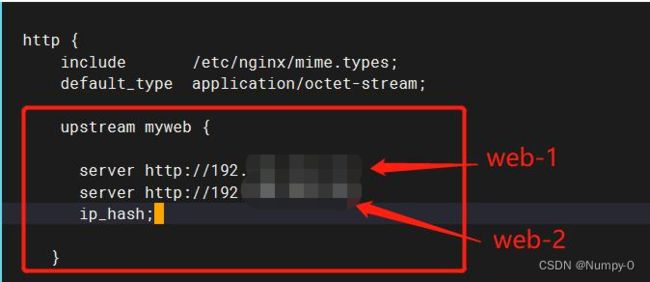- 【Linux | 网络】socket编程 - 使用TCP实现服务端向客户端提供简单的服务
是阿建吖!
【网络】【Linux】网络linuxtcp/ip
目录一、Comm.hpp(公共数据)二、Log.hpp(日志)三、InetAddr.hpp(管理sockaddr_in相关信息)四、NoCopy.hpp(防拷贝)五、Lockguard.hpp(自动管理锁)六、Thread.hpp(封装线程)七、ThreadPool.hpp(线程池)八、dict.txt(配置文件、简单字典)九、Translate.hpp(提供翻译服务)十、Daemon.hpp(使
- Linux文件权限管理
IT摆渡者
网络服务器运维linux
Linux文件权限管理:告别777,掌握核心操作在Linux系统中,文件权限是保障系统安全的基础。不少运维新手图省事,动辄给文件设置777权限,这其实隐藏着巨大安全风险。本文带你快速掌握Linux文件权限的核心知识与实用操作,摆脱对777的依赖。一、文件权限基础概念Linux通过"用户类别+权限类型"实现权限管控,核心要素包括:•三类用户:拥有者(user)、用户组(group)、其他用户(oth
- linux-权限管理
linux-权限管理一、权限的基本类型二、权限的表示方式1.字符形式(rwx)2.数字形式三、权限管理常用命令1.chmod2.chown3.chgrp四、隐藏权限1.lsattr2.chattr五、权限掩码六、特别权限位1.suid2.sgid3.StickyBit七、权限委托1.授权用户2.授权组里的用户3.使用命令别名授权八、ACL1.getfacl2.setfacl总结一、权限的基本类型读
- 【HCIA】TCP三次握手、4次断开详解
戏精亿点点菜
tcp/ip网络服务器
TCP(传输控制协议)是一种面向连接的、可靠的、基于字节流的传输层通信协议。在TCP/IP协议族中,TCP负责在两个网络实体之间建立、维护和终止连接。TCP连接的建立和终止分别通过三次握手和四次断开来完成。一、三次挥手TCP三次握手是建立TCP连接的过程,它确保了通信双方都准备好进行数据传输。过程如下:客户端->服务器:SYN,ISN=x服务器->客户端:SYN,ACK,ISN=y,ACK(x+1
- 【Python】(一)面试题和Py基础题
戏精亿点点菜
python开发语言
1.技术面试题(1)TCP与UDP的区别是什么?答:TCP(TransmissionControlProtocol,传输控制协议)提供的是面向连接,可靠的字节流服务。即客户和服务器交换数据前,必须现在双方之间建立一个TCP连接,之后才能传输数据。并且提供超时重发,丢弃重复数据,检验数据,流量控制等功能,保证数据能从一端传到另一端。UDP(UserDataProtocol,用户数据报协议)是一个简单
- linux-用户和组
2501_92004703
linux服务器运维
linux-用户和组前言一、用户管理1.用户账户类型2.主要命令2.1useradd2.2usedel2.3usermod2.4su3.查看用户登录信息3.1w3.2who3.3last3.4lastlog3.5lastb4.用户配置文件4.1/etc/passwd4.2/etc/shadow4.3/etc/login.defs5.手工新建用户二、组管理1.组分类2.组配置文件总结前言用户和组是进
- 如何设计可扩展的后端系统架构?
破碎的天堂鸟
学习教程系统架构
设计可扩展的后端系统架构需综合考虑核心原则、架构模式、扩展策略、数据存储、容错机制及监控体系。以下是基于行业实践的详细指南:一、可扩展架构的核心原则无状态性(Statelessness)服务不保存客户端状态,请求可被任意实例处理,便于水平扩展。实现:通过负载均衡器(如Nginx、HAProxy)分发请求至多个无状态实例。松散耦合(LooseCoupling)模块间通过API或消息队列通信,减少依赖
- 一文详解:使用HTTPS有哪些优势?
JoySSL303
https网络协议httpssl网络
互联网发展到今天,HTTP协议的明文传输会让用户存在非常大的安全隐患。试想一下,假如你在一个HTTP协议的网站上面购物,你需要在页面上输入你的银行卡号和密码,然后你把数据提交到服务器实现购买。假如这个环节稍有不慎,你的传输数据被第三者给截获了,由于HTTP明文数据传输的原因,你的银行卡号和密码,将会被这个截获人所得到。现在你还敢在一个HTTP的网站上面购物吗?你还会在一个HTTP的网站上面留下你的
- PHP安全编程实践系列(三):安全会话管理与防护策略
软考和人工智能学堂
php#php程序设计经验php安全开发语言
前言会话管理是Web应用安全的核心环节,不安全的会话实现可能导致用户账户被劫持、敏感数据泄露等严重后果。本文将深入探讨PHP中的会话安全机制,分析常见会话攻击手段,并提供全面的防护策略和实践方案。一、会话安全基础1.1PHP会话机制工作原理理论:PHP会话是通过会话ID(SessionID)在服务器和客户端之间维持状态的一种机制。关键流程包括:会话初始化:session_start()调用会话ID
- 虚幻引擎UE5专用服务器游戏开发-19 设置头顶状态条可见性控制
AA陈超
虚幻ue5游戏引擎c++游戏服务器
头顶状态条的动态显示控制。状态条会根据与玩家角色的距离(默认300单位)进行自动隐藏,并通过定时器(默认0.2秒频率)持续检测距离变化。当角色由本地玩家控制时,状态条会自动隐藏。代码采用服务器-客户端初始化架构,并包含碰撞设置、组件创建等基础角色配置。Source/Crunch/Public/Character/CCharacter.h:变量://计时器频率UPROPERTY(EditDefaul
- Linux守护进程
不脱发的程序猿
嵌入式Linux“望闻问切“linux嵌入式
目录1、编写守护进程的步骤2、守护进程的使用和案例设计2.1、案例功能分析2.2、守护进程代码结构2.3、代码实现2.4、代码详解3、编译和运行守护进程4、检查守护进程5、停止守护进程守护进程(Daemon)是一种在后台运行的特殊进程,通常用于执行系统服务、管理任务或处理请求。它们具有几个显著的特征,使其在系统中扮演重要角色。主要特征:长期运行:守护进程通常在系统启动时启动,并会持续运行,直至系统
- Python 爬虫实战:如何搭建高效的分布式爬虫架构,突破数据抓取极限
程序员威哥
python爬虫分布式
随着互联网数据量的飞速增长,单一爬虫在抓取大量数据时的效率和稳定性往往无法满足需求。在这种情况下,分布式爬虫架构应运而生。分布式爬虫通过多节点并行工作,可以大大提高数据抓取的速度,同时减少单点故障的风险。本文将深入探讨如何使用Python构建一个高效的分布式爬虫架构,从架构设计到技术实现,帮助你突破数据抓取的极限。一、什么是分布式爬虫?分布式爬虫系统将爬虫任务拆分为多个子任务,分布到不同的服务器或
- jenkins 自动化部署之后,不允许在工具上查看源代码
小疯仔
jenkins自动化运维
先来展示一下最终的效果在没有如何操作之前的时候,这个Jenkins部署完成之后会在工具上留有源代码,能点击进去,部署到甲方的服务器上的时候会被看到,这样就会造成源码泄露解决方案可以在Jenkinsfile文件中加入以下代码pipeline{agentanytools{nodejs'nodejs16.20.2'}//步骤stages{}//新增post阶段:在流水线结束后清理工作区post{alwa
- VMware Fusion 13 Mac虚拟机
VMwareFusionPromac不仅能让你在Mac苹果电脑上运行Windows或Linux系统、使用非Mac平台的应用,而且还可以支持各种USB硬件设备。原文地址:VMwareFusion13Mac虚拟机
- day49-ansible初体验
朱包林
linuxpython运维服务器云计算
1.选型工具说明缺点xshell不适应机器过多场景,需要连接后才能用for+ssh/scp+密钥认证密钥认证,免密码登录scp传输文本/脚本ssh远程执行命令或脚本串行saltstack需要安装客户端ansible无客户端(密钥认证)批量部署环境需要新python版本,被红帽收购了Terraform关注基础设施(云环境),一键创建100台云服务器,一键创建负载均衡,数据库产品2.ansible架构
- Unity3D 游戏在 iOS 上因为 trampolines 闪退的原因与解决办法
耳朵里有只风
iosunityunity3diosios闪退
崩溃的情况进入游戏一会儿,神马都不要做,双手离开手机,盯着屏幕看吧,游戏会定时从服务器那儿读取一些数据,时间一长,闪退了。尼玛问题是神马呢?完全没有头绪,不过大体猜测是因为网络请求导致的,那么好,先排查服务器返回结果是否有问题,最终确认每次客户端崩溃的时候,服务器都成功的返回了格式正确的数据,没有任何异常。那么可以确定问题是出在客户端部分了。先检查代码,确认逻辑上没有任何问题之后,也倍感无力啊,问
- 深入企业内部的MCP知识(二):FastMCP客户端三大核心能力深度解析:资源、工具与提示的全场景实践
炼丹上岸
大模型#MCPmicrosoft人工智能python交互mcp
引言:MCP协议交互的“三驾马车”在ModelContextProtocol(MCP)的技术生态中,资源(Resources)、工具(Tools)与提示(Prompts)构成了客户端与服务器交互的核心支柱。FastMCP通过统一的API设计,将这三者转化为可直接调用的编程接口,既隐藏了底层协议的复杂性,又保留了高度的灵活性。本文将从技术原理、实战案例到性能优化,系统拆解这三大能力的使用方法与协同逻
- 从零构建MCP服务器:FastMCP实战指南
炼丹上岸
大模型#MCP服务器运维人工智能大模型pythonMCP
引言:MCP协议与FastMCP框架ModelContextProtocol(MCP)是连接AI模型与外部服务的标准化协议,允许LLM(如Claude、Gemini)调用工具、访问数据。然而,直接实现MCP协议需要处理JSON-RPC、会话管理等繁琐细节。FastMCP作为Python框架,封装了这些底层逻辑,让开发者专注于业务功能。本文将通过分步实战,从零构建一个完整的MCP服务器,涵盖工具、资
- kylin安装docker
1.前言本文详细介绍如何在kylinv10上安装docker。系统环境如下:dockder:20.10.7linuxos:kylinv10(GFB)linuxkernel:4.19.90-52.23.v2207.gfb01.ky10.aarch642.安装docker2.1.下载docker二进制包wgethttps://mirror.nju.edu.cn/docker-ce/linux/stat
- arm架构离线部署docker
月慕向阳
arm开发
1.首先检查服务器glibc版本 rpm-qglibc如果glibc-2.35版本以上,则参考下面安装步骤,包下载地址链接:https://pan.baidu.com/s/1X64XrzRva0O7ZSekLZdIcA?pwd=8k4c提取码:8k4cglibc-2.35以上Docker离线安装如下mkdir/opt/dockercd/opt/docker#上传docker-engine-18.0
- 快速启动静态网络服务器的Run工具使用指南
闫泽华
本文还有配套的精品资源,点击获取简介:本文介绍了如何使用run工具,一个通过npm全局安装的Node.js包,来启动一个简单的静态文件服务器。介绍了npm的作用,以及如何全局安装run。随后,文章解释了run工具的用途,包括从任何目录快速启动静态网站服务器的能力,并讨论了它在开发、测试和演示中的应用。还涉及了使用run工具时涉及的一些基本任务,如处理HTTP请求和返回静态资源,以及提供了源代码文件
- 银河麒麟操作系统 v10 中离线安装 Docker
ascarl2010
Docker信创dockereureka容器
银河麒麟操作系统v10中离线安装Docker1.查看系统版本2.查看Linux内核版本(3.10以上)3.查看iptabls版本(1.4以上)4.判断处理器架构5.离线下载Docker安装包6.移动解压出来的二进制文件到/usr/bin目录中7.配置Docker服务7.1编辑docker的系统服务文件7.2将下面的内容复制到刚创建的docker.service文件中7.3为docker.servi
- 编译ARM开发板的内核镜像(linux)
不霁何虹丶
内核linux内核ubootkernel嵌入式
编译内核其实本质上就是熟悉流程与配置的更改,本文暂时只介绍流程,对于更改,以后详谈。一点要注意:需要先安装arm-linux-gcc交叉编译器!切记!获取内核源码如果你有开发板,那么商家大多会给你资料,其中就有对应该开发板SOC的linux内核,如果里面没有对应的linux内核源码,那么本文不适合你了,你需要移植或自己找对应的内核源码。开始制作镜像既然已经获得了源码包,经过ubuntu下的tarx
- 容器和 Kubernetes 中的退出码
riverz1227
k8skubernetes容器云原生
在Kubernetes中,Pod中容器的退出状态(exitCode)表示容器进程退出时的状态码。这个exitCode通常是应用程序或shell返回的标准UNIX/Linux退出码。理解常见的exitCode有助于我们快速定位容器异常退出的原因。一、常见exitCode及含义(基础类)exitCode含义说明常见原因0成功退出(正常)容器程序已完成任务或被优雅终止1一般性错误(GeneralErro
- lxcfs:容器虚拟化资源视图的关键利器
随着容器技术的快速普及,如何让容器内的应用准确感知和使用自身的资源限制,成为容器运行时和编排系统必须面对的重要问题一、为什么需要lxcfs?容器通过Linux的cgroup实现资源隔离,限制CPU、内存等资源的使用上限。但容器内的进程访问/proc文件系统时,默认看到的是宿主机的全局资源视图,而非自身的配额。例如:容器限制了2核CPU,但/proc/cpuinfo显示宿主机的全部CPU信息。容器内
- 鲲鹏麒麟离线安装Docker
angushine
docker
服务器信息[root@testinstall]#cat/etc/kylin-releaseKylinLinuxAdvancedServerreleaseV10(Tercel)下载安装包访问https://download.docker.com/linux/static/stable/aarch64/找到合适的版本,这里采用18.09.9这个版本访问如下链接下载安装包wgethttps://down
- Linux/Unix 套接字Socket编程(socket基本概念,流程,流式/数据报socket,Unix domain socket示例)
套接字文章目录套接字Isocket基础1、通信domain2、通用socket地址结构体3、socket类型4、创建和关闭socket5、将socket绑定到地址6、流socket(1)流socket服务端-客户端模型(2)系统调用listen()(3)系统调用accept()(4)系统调用connect()(5)系统调用recv()(6)系统调用send()7、数据报socket(1)数据报so
- Linux/Unix线程及其同步(create、wait、exit、互斥锁、条件变量、多线程)
JeffersonZU
Unix/Linux系统编程linuxunixgnuc语言
线程文章目录线程I线程基本概念1、为什么引入线程2、PthreadsII线程基本操作1、创建线程2、终止线程3、线程ID4、连接已终止线程5、线程基本操作示例III通过互斥量同步线程1、基本概念2、互斥量(Mutex)3、静态分配互斥量4、互斥量锁定与解锁5、互斥量的死锁6、互斥量类型7、动态初始化互斥量IV通过条件变量同步线程1、条件变量2、静态分配的条件变量3、初始化动态分配的条件变量4、通知
- VMware Fusion 13 Mac虚拟机
fengyun2891
macosmac虚拟机
VMwareFusionmac不仅能让你在Mac苹果电脑上运行Windows或Linux系统、使用非Mac平台的应用,而且还可以支持各种USB硬件设备。原文地址:VMwareFusion13Mac虚拟机
- 一会通一会不通 一台设备ping_Linux刚开机能ping通网关,一会就ping不通了
毕须喝芮幸冰咖啡
一会通一会不通一台设备ping
{"moduleinfo":{"card_count":[{"count_phone":1,"count":1}],"search_count":[{"count_phone":2,"count":2}]},"card":[{"des":"阿里云云盾基于对海量用户设备、IP、账户行为的画像分析,自动识别虚假账户及盗号,屏蔽垃圾信息及非法广告,同时对图片和视频进行智能鉴黄、鉴恐,降低spam,专注正
- log4j对象改变日志级别
3213213333332132
javalog4jlevellog4j对象名称日志级别
log4j对象改变日志级别可批量的改变所有级别,或是根据条件改变日志级别。
log4j配置文件:
log4j.rootLogger=ERROR,FILE,CONSOLE,EXECPTION
#log4j.appender.FILE=org.apache.log4j.RollingFileAppender
log4j.appender.FILE=org.apache.l
- elk+redis 搭建nginx日志分析平台
ronin47
elasticsearchkibanalogstash
elk+redis 搭建nginx日志分析平台
logstash,elasticsearch,kibana 怎么进行nginx的日志分析呢?首先,架构方面,nginx是有日志文件的,它的每个请求的状态等都有日志文件进行记录。其次,需要有个队 列,redis的l
- Yii2设置时区
dcj3sjt126com
PHPtimezoneyii2
时区这东西,在开发的时候,你说重要吧,也还好,毕竟没它也能正常运行,你说不重要吧,那就纠结了。特别是linux系统,都TMD差上几小时,你能不痛苦吗?win还好一点。有一些常规方法,是大家目前都在采用的1、php.ini中的设置,这个就不谈了,2、程序中公用文件里设置,date_default_timezone_set一下时区3、或者。。。自己写时间处理函数,在遇到时间的时候,用这个函数处理(比较
- js实现前台动态添加文本框,后台获取文本框内容
171815164
文本框
<%@ page language="java" import="java.util.*" pageEncoding="UTF-8"%>
<!DOCTYPE html PUBLIC "-//W3C//DTD XHTML 1.0 Transitional//EN" "http://w
- 持续集成工具
g21121
持续集成
持续集成是什么?我们为什么需要持续集成?持续集成带来的好处是什么?什么样的项目需要持续集成?... 持续集成(Continuous integration ,简称CI),所谓集成可以理解为将互相依赖的工程或模块合并成一个能单独运行
- 数据结构哈希表(hash)总结
永夜-极光
数据结构
1.什么是hash
来源于百度百科:
Hash,一般翻译做“散列”,也有直接音译为“哈希”的,就是把任意长度的输入,通过散列算法,变换成固定长度的输出,该输出就是散列值。这种转换是一种压缩映射,也就是,散列值的空间通常远小于输入的空间,不同的输入可能会散列成相同的输出,所以不可能从散列值来唯一的确定输入值。简单的说就是一种将任意长度的消息压缩到某一固定长度的消息摘要的函数。
- 乱七八糟
程序员是怎么炼成的
eclipse中的jvm字节码查看插件地址:
http://andrei.gmxhome.de/eclipse/
安装该地址的outline 插件 后重启,打开window下的view下的bytecode视图
http://andrei.gmxhome.de/eclipse/
jvm博客:
http://yunshen0909.iteye.com/blog/2
- 职场人伤害了“上司” 怎样弥补
aijuans
职场
由于工作中的失误,或者平时不注意自己的言行“伤害”、“得罪”了自己的上司,怎么办呢?
在职业生涯中这种问题尽量不要发生。下面提供了一些解决问题的建议:
一、利用一些轻松的场合表示对他的尊重
即使是开明的上司也很注重自己的权威,都希望得到下属的尊重,所以当你与上司冲突后,最好让不愉快成为过去,你不妨在一些轻松的场合,比如会餐、联谊活动等,向上司问个好,敬下酒,表示你对对方的尊重,
- 深入浅出url编码
antonyup_2006
应用服务器浏览器servletweblogicIE
出处:http://blog.csdn.net/yzhz 杨争
http://blog.csdn.net/yzhz/archive/2007/07/03/1676796.aspx
一、问题:
编码问题是JAVA初学者在web开发过程中经常会遇到问题,网上也有大量相关的
- 建表后创建表的约束关系和增加表的字段
百合不是茶
标的约束关系增加表的字段
下面所有的操作都是在表建立后操作的,主要目的就是熟悉sql的约束,约束语句的万能公式
1,增加字段(student表中增加 姓名字段)
alter table 增加字段的表名 add 增加的字段名 增加字段的数据类型
alter table student add name varchar2(10);
&nb
- Uploadify 3.2 参数属性、事件、方法函数详解
bijian1013
JavaScriptuploadify
一.属性
属性名称
默认值
说明
auto
true
设置为true当选择文件后就直接上传了,为false需要点击上传按钮才上传。
buttonClass
”
按钮样式
buttonCursor
‘hand’
鼠标指针悬停在按钮上的样子
buttonImage
null
浏览按钮的图片的路
- 精通Oracle10编程SQL(16)使用LOB对象
bijian1013
oracle数据库plsql
/*
*使用LOB对象
*/
--LOB(Large Object)是专门用于处理大对象的一种数据类型,其所存放的数据长度可以达到4G字节
--CLOB/NCLOB用于存储大批量字符数据,BLOB用于存储大批量二进制数据,而BFILE则存储着指向OS文件的指针
/*
*综合实例
*/
--建立表空间
--#指定区尺寸为128k,如不指定,区尺寸默认为64k
CR
- 【Resin一】Resin服务器部署web应用
bit1129
resin
工作中,在Resin服务器上部署web应用,通常有如下三种方式:
配置多个web-app
配置多个http id
为每个应用配置一个propeties、xml以及sh脚本文件
配置多个web-app
在resin.xml中,可以为一个host配置多个web-app
<cluster id="app&q
- red5简介及基础知识
白糖_
基础
简介
Red5的主要功能和Macromedia公司的FMS类似,提供基于Flash的流媒体服务的一款基于Java的开源流媒体服务器。它由Java语言编写,使用RTMP作为流媒体传输协议,这与FMS完全兼容。它具有流化FLV、MP3文件,实时录制客户端流为FLV文件,共享对象,实时视频播放、Remoting等功能。用Red5替换FMS后,客户端不用更改可正
- angular.fromJson
boyitech
AngularJSAngularJS 官方APIAngularJS API
angular.fromJson 描述: 把Json字符串转为对象 使用方法: angular.fromJson(json); 参数详解: Param Type Details json
string
JSON 字符串 返回值: 对象, 数组, 字符串 或者是一个数字 示例:
<!DOCTYPE HTML>
<h
- java-颠倒一个句子中的词的顺序。比如: I am a student颠倒后变成:student a am I
bylijinnan
java
public class ReverseWords {
/**
* 题目:颠倒一个句子中的词的顺序。比如: I am a student颠倒后变成:student a am I.词以空格分隔。
* 要求:
* 1.实现速度最快,移动最少
* 2.不能使用String的方法如split,indexOf等等。
* 解答:两次翻转。
*/
publ
- web实时通讯
Chen.H
Web浏览器socket脚本
关于web实时通讯,做一些监控软件。
由web服务器组件从消息服务器订阅实时数据,并建立消息服务器到所述web服务器之间的连接,web浏览器利用从所述web服务器下载到web页面的客户端代理与web服务器组件之间的socket连接,建立web浏览器与web服务器之间的持久连接;利用所述客户端代理与web浏览器页面之间的信息交互实现页面本地更新,建立一条从消息服务器到web浏览器页面之间的消息通路
- [基因与生物]远古生物的基因可以嫁接到现代生物基因组中吗?
comsci
生物
大家仅仅把我说的事情当作一个IT行业的笑话来听吧..没有其它更多的意思
如果我们把大自然看成是一位伟大的程序员,专门为地球上的生态系统编制基因代码,并创造出各种不同的生物来,那么6500万年前的程序员开发的代码,是否兼容现代派的程序员的代码和架构呢?
- oracle 外部表
daizj
oracle外部表external tables
oracle外部表是只允许只读访问,不能进行DML操作,不能创建索引,可以对外部表进行的查询,连接,排序,创建视图和创建同义词操作。
you can select, join, or sort external table data. You can also create views and synonyms for external tables. Ho
- aop相关的概念及配置
daysinsun
AOP
切面(Aspect):
通常在目标方法执行前后需要执行的方法(如事务、日志、权限),这些方法我们封装到一个类里面,这个类就叫切面。
连接点(joinpoint)
spring里面的连接点指需要切入的方法,通常这个joinpoint可以作为一个参数传入到切面的方法里面(非常有用的一个东西)。
通知(Advice)
通知就是切面里面方法的具体实现,分为前置、后置、最终、异常环
- 初一上学期难记忆单词背诵第二课
dcj3sjt126com
englishword
middle 中间的,中级的
well 喔,那么;好吧
phone 电话,电话机
policeman 警察
ask 问
take 拿到;带到
address 地址
glad 高兴的,乐意的
why 为什么
China 中国
family 家庭
grandmother (外)祖母
grandfather (外)祖父
wife 妻子
husband 丈夫
da
- Linux日志分析常用命令
dcj3sjt126com
linuxlog
1.查看文件内容
cat
-n 显示行号 2.分页显示
more
Enter 显示下一行
空格 显示下一页
F 显示下一屏
B 显示上一屏
less
/get 查询"get"字符串并高亮显示 3.显示文件尾
tail
-f 不退出持续显示
-n 显示文件最后n行 4.显示头文件
head
-n 显示文件开始n行 5.内容排序
sort
-n 按照
- JSONP 原理分析
fantasy2005
JavaScriptjsonpjsonp 跨域
转自 http://www.nowamagic.net/librarys/veda/detail/224
JavaScript是一种在Web开发中经常使用的前端动态脚本技术。在JavaScript中,有一个很重要的安全性限制,被称为“Same-Origin Policy”(同源策略)。这一策略对于JavaScript代码能够访问的页面内容做了很重要的限制,即JavaScript只能访问与包含它的
- 使用connect by进行级联查询
234390216
oracle查询父子Connect by级联
使用connect by进行级联查询
connect by可以用于级联查询,常用于对具有树状结构的记录查询某一节点的所有子孙节点或所有祖辈节点。
来看一个示例,现假设我们拥有一个菜单表t_menu,其中只有三个字段:
- 一个不错的能将HTML表格导出为excel,pdf等的jquery插件
jackyrong
jquery插件
发现一个老外写的不错的jquery插件,可以实现将HTML
表格导出为excel,pdf等格式,
地址在:
https://github.com/kayalshri/
下面看个例子,实现导出表格到excel,pdf
<html>
<head>
<title>Export html table to excel an
- UI设计中我们为什么需要设计动效
lampcy
UIUI设计
关于Unity3D中的Shader的知识
首先先解释下Unity3D的Shader,Unity里面的Shaders是使用一种叫ShaderLab的语言编写的,它同微软的FX文件或者NVIDIA的CgFX有些类似。传统意义上的vertex shader和pixel shader还是使用标准的Cg/HLSL 编程语言编写的。因此Unity文档里面的Shader,都是指用ShaderLab编写的代码,
- 如何禁止页面缓存
nannan408
htmljspcache
禁止页面使用缓存~
------------------------------------------------
jsp:页面no cache:
response.setHeader("Pragma","No-cache");
response.setHeader("Cache-Control","no-cach
- 以代码的方式管理quartz定时任务的暂停、重启、删除、添加等
Everyday都不同
定时任务管理spring-quartz
【前言】在项目的管理功能中,对定时任务的管理有时会很常见。因为我们不能指望只在配置文件中配置好定时任务就行了,因为如果要控制定时任务的 “暂停” 呢?暂停之后又要在某个时间点 “重启” 该定时任务呢?或者说直接 “删除” 该定时任务呢?要改变某定时任务的触发时间呢? “添加” 一个定时任务对于系统的使用者而言,是不太现实的,因为一个定时任务的处理逻辑他是不
- EXT实例
tntxia
ext
(1) 增加一个按钮
JSP:
<%@ page language="java" import="java.util.*" pageEncoding="UTF-8"%>
<%
String path = request.getContextPath();
Stri
- 数学学习在计算机研究领域的作用和重要性
xjnine
Math
最近一直有师弟师妹和朋友问我数学和研究的关系,研一要去学什么数学课。毕竟在清华,衡量一个研究生最重要的指标之一就是paper,而没有数学,是肯定上不了世界顶级的期刊和会议的,这在计算机学界尤其重要!你会发现,不论哪个领域有价值的东西,都一定离不开数学!在这样一个信息时代,当google已经让世界没有秘密的时候,一种卓越的数学思维,绝对可以成为你的核心竞争力. 无奈本人实在见地




